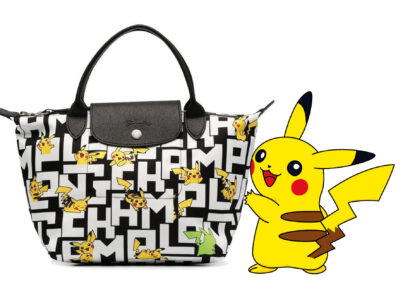
luxury conquers the no canal
Feared by luxury houses at the beginning, making most of them late adopters, the digital world is now a major and unavoidable axis of their ...
Our Expertise

Mandy Sadrin is head of purchasing for Hanes Europe Innerwear group (HEI).
She has highly contributed to the evolution of the purchasing function at HEI by helping to implement financial performances levers while keeping quality and the brand’s DNA at the center of her team’s actions and motivations.

How is the purchasing department organized?
Mandy Sadrin :HEI’s purchases are organized in geographic zones with a corporate management from the headquarters in the US. There are various purchasing divisions to lead the global procurement of the group.
Area’s heads work in collaboration together to secure efficient suppliers’ portfolio management, maximize volume consolidation and ensure that each zone properly covers its own specific business and procurement requirements.
The Europe purchasing department reports to the European Manufacturing Department I manage as well, in charge of transversal functions in relation with the group’s operations (packaging development, transportation, customs and codification).
Tell us more about Hanes Europe’s transformation challenges?
MS : The group is constantly and quickly adapting and going through major transformations in order to face the competitive challenges in the textile sector.
When I joined Hanes 8 years ago, each brand in Europe was running its own local operations with their own local support team which included dedicated purchasing resources. This first centralization I carried out was to gather all of the direct procurement resources to form a dedicated European procurement platform which we organized around expertise center and products’ categories which lead to significant rationalizations and to synergies at a European level. Over the past 5 years, we’ve been working really hard on the optimization process of our platforms and on the analysis of our product value in order to ensure the best possible should-cost level. Then, when Hanes bought our group, we took a global approach at a worldwide level by centralizing direct and indirect procurement in Europe in order to enable us to act as one with all of our suppliers but also with other Hanes regional procurement leaders where we implemented our own resources. This allows us to work much closer with our suppliers in each geographic area where we source and manufacture.
The textile manufacturing industry is facing some major changes: news sourcing/manufacturing areas, shift in distribution channels with e-commerce and increasing market shares of the retail, fast fashion etc. All these challenges push the procurement expertise further and further and impose us into better anticipation and forecasting in order to adapt our strategies and secure the Group’s competitiveness.

How would you grade the procurement maturity at Hanes Group?
MS : Because of our textile industry history, we gained a strong expertise on products procurement. We manufacture most of our products in our own facilities. We are very demanding on our raw-materials’ suppliers and our subcontractors because we aim at building and investing into long-term strategic partnerships with them. This creates a win-win situation with them and secures our price competitiveness in a highly competitive industry.
Meanwhile, the attention level devoted to indirect procurement has not been as intense, resulting in a lower maturity than in our raw material, manufacturing and sub-contracting procurement activities. Hence, we have been refocusing on our indirect procurement activities over the last 2 years in order to rationalize our suppliers’ portfolio, optimize global procurement performance, implement selection processes and purchasing tools to manage indirect categories. This is the reason we selected harpagon to provide the Group with expert consulting support to optimize our MAP (Marketing/Advertising/Promotion) procurement and global efficiency.
You are heading the procurement department of a group with iconic brands such as DIM, Wonderbra, Playtex, Champion … how do you handle suppliers’ requests ?
MS : Indeed! We have to deal with thousands of new suppliers’ offers and requests which has resulted in the formalization of a set of selection criteria for our RFI/RFPs. However, at the same time, I want the procurement teams to keep their doors open to allow us to assess and grab new opportunities.
Our Group regional purchasing leaders frequently meet to share their own markets’ insights, in order to ensure we adapt and keep innovation at the center of our procurement activity.
What kind of relationship did you establish with your strategic suppliers?
MS : We are aiming at building deals where both parties share common growth interests on a mid/long-term perspective. For example, this can result in the worldwide consolidation of our volumes with one supplier, or in an R&D partnership where we will jointly develop and launch a major innovation.
These types of partnerships are made possible thanks to the loyal and privileged relationships we have been building with these strategic suppliers.
Tell us more about risks management at Hanes?
MS : Hanes group has an international impact, is listed on the stock exchange and is therefore exposed.
Risk management is primarily focusing on ethics, social, and quality issues which can lead to dramatic impacts on our Group and its brands’ image and reputation. Therefore, in this area, all procurement activities’ main focus is to ensure the ecosystem in which they are operating complies with the group’s social, ethic, and quality requirements. As a result, each supplier has to undergo audit and compliance process prior to becoming one of our partners. Further along, all our suppliers are audited on a regular basis with a zero tolerance on these topics.
When we are tapping a new sourcing area, we are doing it with our strategic partners already producing for us in other mature areas, and which are able to guaranty us that our required level, standards and processes will be duplicated and respected when we start manufacturing with them in a new area.
When it comes to protecting us from the risk of capacity rupture from one supplier, we closely monitor our shares of each supplier’s manufacturing capacity to keep volumes at acceptable levels, and we systematically implement a second manufacturing capacity with another supplier on strategic products.
How are sourcing and spending monitored and reported between each country, region and at Group Level ? Where do you stand on e-procurement ?
MS : At European and global level, we get a consolidated report on direct purchasing key indicators per category and product line
(volumes, turnover, etc). We implemented an online tool to manage RFI/RFPs for both indirect and direct procurement. We also track savings and monitor action plans to execute our procurement strategy.
Innovation is also key in the lingerie and textile industry.
How do you manage to keep track and benchmark at a worldwide scale of your Group?
MS : We have an open innovation department at European level. This department closely works with prestigious universities specialized in breast biology such as Portsmouth in the UK, and competitive poles in order to spot trends and future innovations. Each month, the innovation department discloses an internal newsletter featuring our industry’s trends and innovations around the world.
The procurement department is backing up the innovation department internally by organizing the “Innovation days” with our strategic suppliers so that themselves can, in return, introduce the innovations they are working on.
What is Hanes’ vision and strategy on social and environmental issues?
MS : Hanes group is not only active but also highly committed on these topics at every level of the organization.
A dedicated CSR team (Corporate Social Responsibility) is in charge of auditing all our suppliers. On the environmental side, the Global Environment System aims at reducing the group’s energy and water consumption and implementing a comprehensive waste recycling by 2020.
One can follow all these initiatives on hanesforgood.com.
Where is Hanes standing on ethical and sustainable procurement?
MS : Ethics is the center of our procurement policies.
We are actively working with our suppliers on sustainable procurement, and we also align our new supplier’s selection criteria in order to be in compliance with our group’s CSR policy. Concerning sustainability of our products, we are trying to look how to use alternative and innovative components/yarn, but as we currently have products in research and development with these targets, I can’t tell you more about this.
How far did you get in establishing and implementing standardized best practice throughout the Group?
MS : The procurement centralization was a way to standardize our good/best practices and processes on direct procurement. However, as I mentioned earlier, bringing greater maturity into our indirect procurement is a priority. This is an area where we recently started centralizing the categories when that brings additional performance. This area of our procurement activities is definitely one of our next opportunity for significant savings potential and an area for improvement.
How is the procurement department seen in Hanes Group? Do you feel close to the operations teams especially the marketing and communication department?
MS : Nowadays, the procurement department is renown at Hanes Group for being a solid support function to ensure our competitiveness. We work closely with our internal marketing clients as well as with all of our internal clients in a trusting relationship and mutual transparency.
We are very close to them as our agenda is very busy with new launches, and at the end of the day, we all have one common result to deliver.

Feared by luxury houses at the beginning, making most of them late adopters, the digital world is now a major and unavoidable axis of their ...

Scanning a barcode to know the composition of a product, reading other customers before choosing a restaurant, or comparing airfare prices, ...

From Christie’s sale of a piece of digital art for $69 million, to Jack Dorsey’s (co-founder of the Twitter platform) first twee...